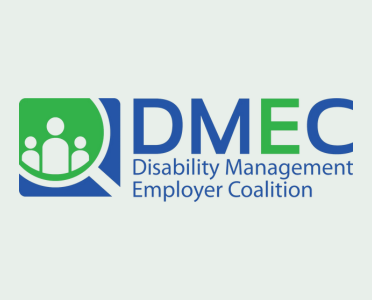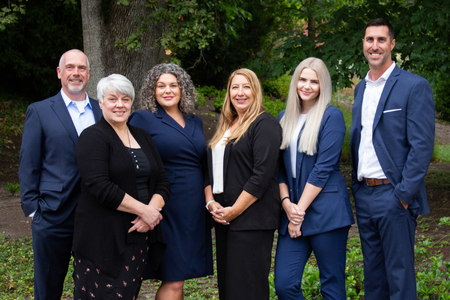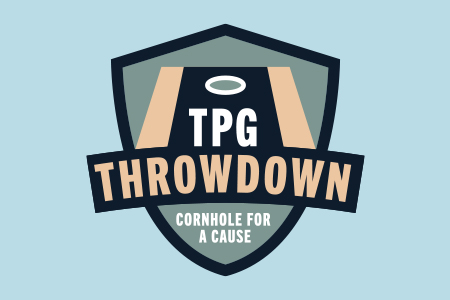For any employee once stumped by the question, “Should I stay or should I go (on leave)” while weighing whether participation in a clinical trial would be covered under the Family and Medical Leave Act (FMLA), the DOL has weighed in. You may go (on leave).
This quarter’s newsletter covers recent guidance from the DOL’s Wage & Hour Division, exciting paid sick leave developments in three states, the latest changes to our statutory PFML programs (think California, Colorado), and plenty more. Here’s a song to help you focus while you’re reading!
FEDERAL UPDATES

Granting FMLA for Clinical Trials
While many of you have been enjoying your one-year membership to the Jelly of the Month Club (Christmas Vacation, anyone?), the US Department of Labor’s Wage and Hour Division issued an opinion letter on November 8, 2024, affirming that employees may use Family and Medical Leave Act (FMLA) leave when participating in clinical trials. This is significant guidance, as it clarifies the scope of permitted uses of FMLA leave to include medical interventions provided as part of clinical trials.
Key takeaways include: Employees who meet all other FMLA requirements may take FMLA for clinical trial treatment of a serious health condition, regardless of whether the treatment is experimental or involves placebos and employers may not ask about the effectiveness of a treatment, the specific medications prescribed, or the detailed treatment plan when determining employee eligibility.
The DOL provided two useful examples (we’ve outlined one below):
- Bernard has cancer and is participating in a clinical trial for a new drug intended to help patients manage side effects from chemotherapy. Bernard meets the FMLA eligibility criteria. In the clinical trial, Bernard does not know whether he has been prescribed the new drug or a placebo. Bernard may use FMLA leave intermittently for time spent receiving chemotherapy and participating in the clinical trial, including recovery time.
Leave also extends to caring for a family member with a serious health condition and taking FMLA military caregiver leave to care for a covered service member when the person being cared for is participating in a clinical trial.
The fact that treatment is considered optional, voluntary, or elective is not a factor in the determination of whether an employee may take FMLA. This is in contrast to elective procedures for cosmetic treatments, such as acne or plastic surgery, which generally do not qualify for FMLA leave (disclaimer: certain elective procedures may have protection under FMLA).
Finally, the certification process remains unchanged. Employers may only verify that an employee has a serious health condition requiring “treatment” by a healthcare provider when responding to a leave request.
DID YOU KNOW

TPG provides a discount to clients interested in obtaining their Certified Leave Management Specialist (CLMS) designation through DMEC. The CLMS program is the only professional designation of its kind and provides interactive, hands-on training to ensure organizational programs effectively comply with state and federal leave laws. The course is online and self-study. The exam is $599 for DMEC members and $899 for non-members. However, The Partners Group can provide $100 off the member or non-member rate. You can register here: https://dmec.org/certification-and-training/clms-certification/pricing-and-group-purchases/ with discount code: Partners100E (codes are case sensitive). If you have additional questions, please contact your TPG account manager.
CASE LAW

FMLA Interference Without Denying FMLA
Recently, a federal appellate court concluded a manager can cause an employer to violate FMLA by deterring an employee from enjoying benefits under FMLA without asking the company to deny the employee’s request for leave.
The plaintiff was a manager at a pharmaceutical company. She took some time off in 2015 to care for her daughter’s serious health condition. Then, in April and May 2016, she took FMLA to have surgery for her own serious health condition, and in June 2016, worked remotely to care for her daughter.
After returning to the office, her supervisor told her “[she] needed to be more visible in the office and attend meetings in person rather than by phone.” That supervisor then limited the plaintiff to one day of remote work per week, even though others in the plaintiff’s department regularly worked from home and some non-managers worked remotely full-time. See where I’m going here???
The same manager encouraged the plaintiff to go to HR and ask about using paid time off or intermittent FMLA leave rather than remote work for additional days spent away from the office. The plaintiff subsequently applied for intermittent FMLA to care for her daughter, which the company approved. The plaintiff resigned shortly thereafter.
Then, she sued for FMLA interference. Note, the company never denied her request for FMLA to care for her daughter. Rather, the plaintiff argued her supervisor effectively required her to take FMLA by eliminating remote work (while allowing others access), which unlawfully interfered with the exercise of her rights under the FMLA.
The Second Circuit (Connecticut, New York, and Vermont) Court of Appeals concluded “an employer can violate FMLA merely by interfering with the employee’s benefits under FMLA without actually denying the employee’s request for those benefits,” which “reflects the statute’s plain, unambiguous text, according to which it is unlawful for an employer to ‘interfere with, restrain, or deny’ FMLA rights.”
The Second Circuit’s holding aligns with the Department of Labor’s position.
This serves as a reminder that FMLA interference claims are not only limited to instances where employees are discouraged or prohibited from taking FMLA, they may also apply to scenarios where employers are inconsistently applying work rules – in this case, allowing similarly-situated employees access to remote work, but limiting this employee’s access and forcing intermittent FMLA.

Reminder: No Need to Remove Essential Job Functions Under the ADA
A federal appellate court recently ruled a university did not have to accommodate the disability of a professor by relaxing the tenure requirements or giving her a second chance to satisfy them.
Employers do not need to remove essential job functions as an accommodation (exceptions to this requirement under the Pregnant Workers Fairness Act) and should rather focus on identifying reasonable accommodations that will enable the employee to successfully perform their role. Employers can refuse to promote (or hire) individuals who cannot meet the position’s requirements.
In this case, the plaintiff had been a high-performing professor who sadly suffered a traumatic brain injury. Even with accommodations, the plaintiff’s performance declined. When she became eligible for tenure, some of her students noted her failure to deliver in the classroom. When evaluating tenure, the university considered anonymous student evaluations and the evaluation scores “dropped dramatically” below the acceptable level. Consequently, the university denied the plaintiff’s tenure application.
Then, the plaintiff sued, alleging failure to accommodate her disability under the Americans with Disabilities Act. The lower court entered summary judgment for the university. The plaintiff urged reversal. To succeed, she had to demonstrate she was a qualified individual with a disability and the university failed to reasonably accommodate. The court noted her poor student evaluations meant she could not satisfy the tenure requirements.
“Simply put,” noted the court, the ADA “does not shelter disabled individuals if they cannot fulfill the position’s requirements as prescribed by the employer or fail to meet their employer’s expectations . . . . This is true even if, after further inquiry, an employer determines that the employee’s inability to perform the job is due entirely to a disability.”
In other words, the university did not have to relax or reduce tenure requirements to accommodate the professor. Additionally, it did not have to give her a second chance.
Beyond removal of essential functions, there are a number of remedies an employer does not have to provide as a reasonable accommodation, including making changes to help an employee with daily activities not specific to work (e.g., prosthetic limbs, wheelchairs, hearing aids), lower quality or production standards, create a new job, accommodate a violation of conduct or safety rules, accept indefinite absences or unreliable unpredictable attendance, or change supervisors.
STATE UPDATES
ALASKA
New Paid Sick Leave Legislation
Alaska is one of three states (hi, Nebraska and Missouri!) that passed paid sick leave legislation during November’s election. The ballot measure approved paid sick leave for all employees and the new requirement becomes effective July 1, 2025.
All employees are entitled to accrue a minimum of one hour of paid sick leave for every 30 hours worked up to a cap. Employers with 15 or more employees may cap accrual and usage at 56 hours per year. Employers with fewer than 15 employees may cap accrual and usage at 40 hours per year.
Employees begin to accrue paid sick leave on July 1, 2025, or at the commencement of employment, whichever is later.
Paid sick leave carries over to the following year but does not affect the amount of leave an employee may use in any given year.
Employees may use paid sick leave as it is accrued and for the following reasons:
- An employee’s mental or physical illness, including diagnosis, care, treatment, and preventative medical care;
- Care or assistance to an employee’s family member for the same reasons (“family member” is defined as domestic partner, foster child, legal ward, person to whom an employee stands in loco parentis, foster parent, adoptive parent, legal guardian, person who stood in loco parentis when the employee was a minor child, or any other individual related by blood or whose close association is the equivalent of a family relationship); or
- Absences due to domestic violence, sexual assault, or stalking to allow the employee or a family member to obtain medical or psychological attention, services from a victim’s aid organization, relocation, legal services, or participation in any investigation or civil or criminal proceeding.
Employees are required to give employers notice if the need for paid sick leave is foreseeable and must schedule foreseeable leave in a manner that does not unduly disrupt the employer’s operations.
For paid sick leave use of more than three consecutive workdays, an employer may require reasonable documentation certifying the leave was used for a covered reason.
Employers are required to give employees written notice of their entitlement to paid sick leave, the amount of paid sick leave they accrue, and the prohibition against retaliation. This notice must be given at the commencement of employment or within 30 days of the new law’s effective date of July 1, 2025.

CALIFORNIA
Crime Victim Leave Expansion
The list of crimes for which employees can take protected time off has been expanded. The new law also permits the use of state paid sick leave for these purposes.
Previously, California law provided protections to employees from discrimination or retaliation for taking time off for court appearances, or to employees who were victims of crime or abuse.
Under Assembly Bill (AB) 2499, these protections remain in place, but broaden the definition of “victims” to include a victim of a “qualifying act of violence,” which means any of the following, regardless of whether anyone is arrested for, prosecuted for, or convicted of committing any crime:
- Domestic violence
- Sexual assault
- Stalking
- An act, conduct, or pattern of conduct that includes:
- An individual causes bodily injury or death to another
- An individual exhibits, draws, brandishes, or uses a firearm or other dangerous weapon, with respect to another
- An individual uses or makes a reasonably perceived or actual threat of use of force against another to cause physical injury or death.
Additionally, paid sick leave for “safe” time purposes will no longer be limited to employees who are victims; it must also be available when an employee’s family member is a victim. The definition of “family member” will include a child, parent, grandparent, grandchild, sibling, spouse or domestic partner, or designated person.
The circumstances for which paid sick leave is available for the employee or their family member is:
- Seek, obtain, or attempt to obtain any relief (includes, but is not limited to, a temporary restraining order, restraining order, or other injunctive relief, to help ensure the health, safety, or welfare of the victim, their child, or a family member).
- Seek, obtain, or assist medical attention for or to recover from injuries caused by a qualifying act of violence.
- Seek, obtain, or assist services from a domestic violence shelter, program, rape crisis center, or victim services organization or agency because of a qualifying act of violence.
- Seek, obtain, or assist psychological counseling or mental health services related to an experience of a qualifying act of violence.
- Participate in safety planning or take other actions to increase safety from future qualifying acts of violence.
- Relocate or engage in the process of securing a new residence due to the qualifying act of violence, including, but not limited to, securing temporary or permanent housing or enrolling children in a new school or childcare.
- Provide care to a family member who is recovering from injuries caused by a qualifying act of violence.
- Seek, obtain, or assist in civil or criminal legal services in relation to the qualifying act of violence.
- Prepare for, participate in, or attend any civil, administrative, or criminal legal proceeding related to the qualifying act of violence.
- Seek, obtain, or provide childcare or care to a care-dependent adult if the childcare or care is necessary to ensure the safety of the child or dependent adult as a result of the qualifying act of violence.
Employees are permitted to use vacation, personal leave, paid sick leave, or compensatory time off that is available unless otherwise provided in a collective bargaining agreement.
Employers with 25 or more employees will be able to limit the amount of leave an employee may take when they or a family member are a victim of a qualifying act of violence, or a crime victim who is appearing as a witness in court, as follows:
- Qualifying Act of Violence Victim: 12 weeks (total).
- Relocation or Enrolling a Child in a New School or Childcare when Family Member Is a Crime Victim (Non-Fatal): 5 days.
- Family Member Is a Crime Victim (Non-Fatal): 10 days.
- If the absence also qualifies under FMLA or California Family Rights Act (CFRA), leave must run concurrently.
Finally, under the law, employers will be required to provide written notice of their rights established under this bill to new hires, to all employees annually, at any time upon request, and any time the employer becomes newly aware that an employee or an employee’s family member is a victim. The notice must inform employees of:
- Disability or paid family leave benefits made available through the state that might be available;
- Leave under a separate bereavement leave law possibly being available upon the death of a family member who is a victim; and
- Leave rights under other laws (Labor Code sections 230.2 and 230.5) to attend various court proceedings when they or a family member is a crime victim.
This bill took effect January 1, 2025.
Employer Ability to Require Employees Use Vacation Before Receiving Paid Family Leave Eliminated
On September 29, 2024, California’s governor signed into law AB 2123. Beginning January 1, 2025, AB 2123 eliminated employers’ ability to require employees to use up to two weeks of company-provided vacation before they start receiving paid family leave (PFL) insurance benefits paid.

COLORADO
Updated FAMLI Rules
- Coordination of Benefits: When an employee’s serious health condition is related to a workplace injury, an employee is not allowed to apply for FAMLI benefits unless the individual was denied workers’ compensation. The amended rules clarify the types of documents an employee can submit to the state to demonstrate that they are ineligible or are no longer eligible for workers’ compensation benefits. If an employee receives workers’ compensation benefits while receiving FAMLI benefits, the state can recover the overpayment of FAMLI benefits.
- Time-Off Supplementation: As we’ve previously communicated, an employer may permit an employee receiving FAMLI benefits to use employer-provided paid leave benefits so that the employee receives their full wage while on leave. However, the amended rules clarify that such an agreement must be in writing and that one agreement may cover any future arrangements as long as it remains revocable by the employee. When an employee is receiving both FAMLI and employer-provided benefits, the rules also permit employers to recoup any amounts they pay to an employee in excess of their average weekly wage. If there is an overpayment, the employer must put the amount of the overpayment back into the employee’s bank of employer-provided paid leave if the employee requests it or the employer decides to recoup the overpayment.
- Benefit Overpayment: Claimants who receive family and medical leave insurance benefits they are not entitled to receive will be liable for repayment of the amount overpaid. In addition, the Division may waive any amount of benefit overpayment where the recovery would go against equity and good conscience (interested in how the state interprets this on a case-by-case basis . . . ), unless the overpayment resulted from the individual’s willful misrepresentation or willful failure to disclose a material fact. With respect to private plans, the rules require private plan administrators to notify a claimant of any determination of benefit overpayment by sending a determination letter to the claimant’s correct address. For determinations of benefit overpayments totaling $25 or more, the private plan administrator must additionally notify the Division by sending copies of the determination letters to the Division. If the private plan administrator did not notify the Division of an overpayment in accordance with these rules, the Division may assess a fine of up to $50 upon the private plan administrator.
- Intersection of FAMLI Benefits with Other Leaves and Benefits: Following employment separation, if the employee receives unemployment benefits, an award of continuous leave ends. If the employee was awarded intermittent or a reduced leave schedule and becomes unemployed or changes employers, the awarded leave also terminates. The claimant is responsible for notifying the Division of a separation from employment prior to the benefit start date. The amended rules also clarify how a holiday that occurs within a period of leave will be counted for purposes of determining the amount of leave an employee uses. If the employee is awarded continuous leave, any holiday occurring during the leave will be counted as FAMLI leave and the employee will receive wage replacement benefits for that time. If the employee is using intermittent or a reduced leave schedule, the holiday will not count against the employee’s FAMLI entitlement.
- Required Notices: Failure to post or deliver the required program notice to employees can result in a fine of up to $500 per violation. Each day that the employer fails to post or deliver the program notice is a separate violation. Regarding employee obligation, the Act requires employees needing leave to provide 30 days’ notice to the employer if the need for leave is foreseeable and as soon as practicable if not foreseeable. The amended rules require the employee to also notify the employer whether the leave is continuous, intermittent, and/or a reduced leave schedule. In addition, the employee must take reasonable steps to notify the employer in advance of any change in their planned schedule, which include following the employers’ policies on requests or changes of leave to the extent they are not contrary to the rights and protections of the FAMLI Act.
- Wage Deductions: Employers may only deduct the amount necessary to pay the employee’s share of the premium. If an employer deducts more than the amount authorized to pay for the employee, the Division may assess a fine of up to $25 per employee per instance (make sure you are mindful of the Social Security wage cap, folks [news flash: it’s $176,100 for 2025]). On the flip side, the consequences of deducting from employee wages less than the amount necessary to make the premium payment, the Division will deem the employer to have elected to pay the additional portion of the employee’s share and the employer may not deduct the difference from the employee’s pay in a future paycheck. Similarly, employers may not deduct the premium amount when there are insufficient employee wages to cover the premium for that pay period. Finally, if the Division issues a premium reimbursement to an employer, the employer must return to its employees any portion of the reimbursed amount that it collected from the employees. If the employer fails return any portion collected from employees within 60 days of a reimbursement, the Division may assess a fine against the employer of up to $50 per employee owed a reimbursement, per day that the employer fails to do so.
- Private Plan Administration:
- The final rules clarify that an insurer of a private plan cannot allow an employer’s coverage to become effective earlier than 30 days before the employer has received private plan approval from the Division.
- Existing regulations require private plans to provide employees with all documents and records relevant to their benefits upon request — the final rules clarify these documents must be provided within seven days of the employee’s request.
- The Division previously calculated an annual maintenance fee for each private plan employer, based on the costs arising from the administration of their private plan. Under the amended rules, the Division will now calculate a flat fee per private plan employer for all routine costs annually and will assess each private plan employer an individualized fee for other non-routine costs. “Routine costs” associated with all private include, but are not limited to, review of plan modifications necessary to comply with changes to the FAMLI Act, data reporting and analysis costs, data sharing across plans, review of continuing coverage requirements, and random audits. “Non-routine costs” are costs the Division incurs “as a result of private plan administration, including, but not limited to, appeals, investigations, and targeted audits,” among other things. The fee will be prorated for employers whose plan did not cover the full period. The fee will cover costs arising from the fiscal year beginning July 1 and ending June 30 of each year and employers will be provided an invoice of their fees by November 30 each year, and the fees are due by December 31.
- Existing regulations require an employer to notify the Division of any material change to their private plan at least 60 days in advance. The final rules clarify that if an employer is transitioning from one approved private plan to another insurer’s approved private plan, the employer only must provide written notice 35 days in advance.
- The following penalties for private plan employers have been added: Failure to provide documents to employees within seven days: $250 per violation; requiring employees to use more onerous forms to access benefits than those provided by the Division: $500 per violation; failure to provide notice of FAMLI benefits to employees: $500 per violation; failure to notify the Division of a material change to its private plan: $250 per violation; failure to notify employees of a private plan’s termination: $100 per employee, per day; failure to notify employees of a material change to a private plan: $100 per employee, per day; and failure to continue a private plan’s coverage through its scheduled withdrawal date: the lesser of the employee’s daily premium under the plan or $500.
Upgraded FAMLI Appeals Process
The Division has upgraded their appeals process for employers that want to dispute a FAMLI decision and ask for another look.
Here’s what you need to know about the changes:
- This step will be renamed “request a reconsideration” (previously titled grievance) to match the claimant experience and newly adopted rules effective January 1, 2025. “File a grievance” and “request a reconsideration” mean the same thing.
- Employers can fill out this online form to request a reconsideration, or follow the instructions included on the mailed correspondence when the FAMLI Division notifies you of an employee claim decision.
- If an employer still disagrees with the outcome of that decision, then it’s time to file an appeal.
- Employers need to create an account in My FAMLI+ to file, manage, or track an appeal. My FAMLI+ is different from My FAMLI+ Employer, which is the portal used to submit quarterly wage reports and premium payments. Check out this step-by-step guide to learn the process.
- The upgrade also means legal representatives and other interested parties can create an appeals account within My FAMLI+ to file, manage or track FAMLI appeals even if they don’t have an existing claimant or employer account.
Avoid filing a formal appeal until after going through the reconsideration or grievance process when disputing a FAMLI decision. Review the appeals page for more details.
Updates to Serious Health Condition Form
Health Care Providers provided the FAMLI division feedback to improve the Serious Health Condition form. Updates were made to the pregnancy and childbirth section to make it clearer whether the claim is related to pregnancy or childbirth and whether a complication was involved.
For intermittent claims, providers will also soon be able to enter the number of hours a patient may be unable to work per a 30-day period. This more closely aligns with FMLA paperwork.

MAINE
Paid Family and Medical Leave Finalized Rules
On December 4, 2024, while chowing down on lobster rolls, the Maine Department of Labor (DOL) adopted finalized rules for the Maine Paid Family and Medical Leave Program (PFML). OK, I don’t actually know if the Maine DOL was eating lobster rolls at the time these rules were finalized, but that’s my vision. Employer contributions and employee deductions to fund these benefits began on January 1, 2025. Employees can begin receiving benefits effective May 1, 2026.
The rules are largely consistent with other PFML programs, but there are several key differences highlighted below:
- Good Cause Definition: A “good cause” standard clarifies circumstances which allow employees with “good cause” additional time to apply for benefits or request an appeal. “Good cause” is defined as any serious health condition or any physical, intellectual, or linguistic limitation that prevents filing.
- The final rules added a seven-day waiting period.
- Employers can determine undue hardship even if an employee provides reasonable notice of 30 days. An employer’s determination of undue hardship will not be considered reasonable unless the following are established: (1) the employer provided a written explanation of the undue hardship to employee; (2) the employee retains the ability to take leave within a reasonable time frame relative to the proposed schedule; and (3) the employer has made a good faith attempt to work out a schedule for the leave that meets the employee’s needs without unduly disrupting the employer’s operations, subject to the approval of the employee’s healthcare provider.
- The calculation of the average weekly wage is now determined by dividing the applicant’s reported wages in their base period by 52.
- Employers can substitute a similar private plan for the state plan starting April 1, 2025.

MARYLAND
Paid Family and Medical Leave – Coming Soon!
Maryland’s paid family and medical leave insurance law applies to all employers with employees in Maryland. Payroll deductions will start July 1, 2025, and benefits will be available beginning July 1, 2026. Additionally, employers will need to remit the first payment to the state October 1, 2025.
Additionally, Maryland’s Department of Labor (MDOL) has released proposed regulations to implement the law. The proposed regulations provide important insights into how the State will likely interpret and enforce the law; a summary of notable proposals is outlined below.
Employer Responsibilities
- Employers must create and maintain an online account with the FAMLI Division for reporting and remitting contributions.
- Employers are responsible for 100% of contributions but can withhold up to 50% from employees’ wages. Small employers (fewer than 15 employees) have reduced contribution obligations.
- Employers must notify employees about FAMLI leave and benefits at hire, annually, and when an employee’s leave may qualify for FAMLI.
Employee Eligibility and Benefits
- The proposed regulations define a “covered employee” as one who has worked at least 680 hours performing qualified employment in the state over the four most recently completed calendar quarters.
- Benefits are based on the employee’s average weekly wage.
Claims Process
- Employees must submit a complete claim application within 60 days of taking leave.
- Employers have five business days to respond to a claim application.
- Payments are made biweekly. The first payment will be made within five business days after approval.
Equivalent Private Insurance Plans (EPIPs)
- EPIPs must meet or exceed the benefits and requirements under the state plan.
- Employers must participate in the state plan until their EPIP is approved.
- Employees may appeal the denial of benefits to the state, which may pay the benefits that are due and not paid by the employer.
Benefits Coordination
- FAMLI leave will run concurrently with FMLA. If an employee takes leave under FMLA for a reason that would also qualify for FAMLI leave but does not apply for FAMLI benefits, the amount of FAMLI leave available to the employee may be reduced by the amount of FMLA leave taken. This ensures the total leave taken under FAMLI and FMLA does not exceed the maximum allowable leave period. We are big fans of this rule, but unsure how the state will effectively administer.
For a comprehensive overview of the program, please reference TPG’s PFML Overview Guide.

MASSACHUSETTS
Expanded Reasons for Use of Earned Sick Time
The Massachusetts legislature expanded the reasons employees can use Earned Sick Time. Employees may now use Earned Sick Time to “address the employee’s own physical and mental health needs, and those of their spouse, if the employee or the employee’s spouse experiences pregnancy loss or a failed assisted reproduction, adoption or surrogacy.”
These new conditions are in addition to the current reasons employees can use Massachusetts Earned Sick Time:
- To care for the employee’s child, spouse, parent, or parent of a spouse, who is suffering from a physical or mental illness, injury, or medical condition that requires home, professional medical diagnosis or care, or preventative or routine medical care;
- To care for the employee’s own physical or mental illness, injury, or medical condition that requires home, professional medical diagnosis or care ,or preventative or routine medical care;
- To address the psychological, physical, or legal effects of domestic violence against the employee or employee’s child; or
- To travel to and from an appointment, pharmacy, or other location.
The change took effect November 21, 2024.
Paid Family and Medical Leave Act Doesn’t Require Employers to Allow Benefits Accrual
In one of the first decisions interpreting the Massachusetts Paid Family and Medical Leave Act (PFMLA), the Supreme Judicial Court (SJC) held that PFMLA does not require an employer to allow employees to accrue benefits, such as vacation time and sick time, during PFMLA leave. Bodge, et al. v. Commonwealth, et al., (September 13, 2024).
In this case, a group of state troopers sued the State Police, claiming the State Police’s policy of not providing for accrual of employee benefits, including vacation time and sick time, while on PFMLA leave violated the PFMLA. The SJC held that the State Police’s policy did not violate the PFMLA.
The SJC noted PFMLA states, “An employee who has taken family or medical leave shall be restored to the employee’s previous position or to an equivalent position, with the same status, pay, employment benefits, length-of-service credit and seniority as of the date of leave.” The SJC held this part of the statute simply required that an employee’s benefits remain unchanged, not increased or decreased, from when they begin leave to when they return from leave. Thus, an employee returning from PFMLA leave can continue to accrue benefits as if the employee never took the leave, but the employee does not have the right to continue accruing benefits during the leave.

MINNESOTA
Final Proposed Rules
Throughout 2024, Minnesota Paid Leave asked a broad cross-section of workers, industries, service providers, and advocates for feedback on draft rules to build out the Paid Leave program.
Informed by that feedback, Paid Leave published final proposed rules in late November 2024. Public comments on the final proposed rules were collected through January 3, 2025.
These rules cover topics including provider certification; seasonal employment; opting in; intermittent leave; the role of the employer; covered employment; leave modifications; overpayments; job protections; benefit payment schedules; private plans; claims administration; small employer assistance grants; and safety leave.
All 19 pages of the proposed final rules can be found here, but we’ve summarized some key points below.
- Employer Response to Requests for Information: An employer must respond to the commissioner’s request for information about an employee’s application within seven calendar days of the request. If no response is received, the commissioner must process the application without the employer information. If employer information is received after a determination of an applicant’s eligibility, the commissioner must use the additional information to adjust the amount of leave and benefits determined, if necessary.
- Backdating an Application: If an applicant is unable to apply in a timely manner due to incapacitation or no fault of their own, the department shall backdate the application to the effective date of leave. The applicant must provide information and documentation showing the factors that prevented the applicant from applying for benefits when the qualifying event occurred. An applicant seeking to backdate an application or weekly payment must file for benefits within seven days after the factors preventing a timely application no longer exist.
- Private Plans:
- A self-insured employer or private plan insurer must submit an annual report. Beginning in 2027, and annually thereafter, a self-insured employer or private plan insurer must submit the necessary detail by November 1.
- An employer remains liable for premiums on wages paid until the effective date of the approved private plan. Employees remain eligible for benefits from the state-administered plan until the effective date of an approved private plan.
- In addition to the notice required by Minnesota Statutes, an employer must provide notice to their employees about coverage under a private plan. An employer must provide the notice not more than 30 days from the start date of the employee’s employment, or 30 days before premium collection begins, whichever is later.
- Certification for Caregiving Leave: Certification to care for a family member with a serious health condition must include: the relationship of the applicant; the proposed leave schedule; a signed attestation by the healthcare provider that affirms: (1) the family member requires care from the applicant and the healthcare provider is treating the family member; and (2) the date on which the serious health condition commenced, the probable duration of the condition, and the facts establishing that the family member requires care. If more than one applicant seeks leave to provide care for the same family member, the applicants’ certification must be completed by the same healthcare provider. TBD on how well the state manages to track this provision . . . I’m 50% sure they will do so correctly.
- An applicant seeking leave to care for a family member with a serious health condition must attest that the person the applicant is taking leave to care for is the applicant’s family member.
- Safety Leave Certification: A qualified person eligible to sign documentation certifying safety leave includes: an individual who is licensed, certified, or otherwise authorized under law to practice as a mental health professional or practitioner; a licensed healthcare professional; a domestic abuse advocate or sexual assault counselor; a victim’s advocate; a judge, referee, appointed court administrator, prosecutor, or probation officer; a Title IX coordinator; a peace officer, part-time peace officer, or reserve officer; or any other person acting in their professional capacity who can submit documentation that includes the necessary information.

MISSOURI
Paid Sick Leave Law
Is it just me or do you find it fascinating that conservative midwestern states are passing Paid Sick Leave legislation? Since Missouri is the “Show Me State,” I’m here to “show you” the provisions of this law. In the November election, Missourians voted in favor of Proposition A to create a new statewide paid sick and safe time (“paid sick time”) law that will become operative on May 1, 2025.
The law will apply to all employers, though different standards will apply depending on whether an employer has 15 or more, or 14 or fewer (“small employers”), employees in Missouri.
Generally, the law applies to an individual employed in Missouri but contains numerous exceptions. We’ve noted the most significant, but not all, exceptions below:
- Individuals employed for less than four months in any year in a resident or day camp for children or youth, or individuals employed by an educational conference center operated by an educational, charitable, or not-for-profit organization;
- Individuals employed by certain rail carriers;
- Individuals employed on a casual or intermittent basis as a golf caddy, newspaper carrier, or similar occupation;
- Individuals employed by a retail or service business whose annual gross volume sales made or business done is less than $500,000;
- Employees connected with the publication of any weekly, semiweekly, or daily newspaper with a circulation of less than 4,000, most of which is within the county where published or neighboring counties.
Under the law, employees can use leave for themselves or to care for or assist family members – defined as a child, grandchild, grandparent, parent, sibling, spouse, along with an individual with whom the employee is in a continuing social relationship of a romantic or intimate nature, and a person for whom the employee is responsible for providing or arranging health or safety-related care – for the following reasons:
- An employee’s mental or physical illness, injury, or health condition including diagnosis, treatment, and preventative medical care;
- Care of a family member with a mental or physical illness, injury, or health condition, including diagnosis, treatment, and preventive medical care;
- If the employee or their family member is a victim of domestic violence, sexual assault, or stalking:
- Medical attention needed to recover from physical or psychological injury;
- Services from a victim services organization;
- Psychological or other counseling;
- Relocation or taking steps to secure an existing home; and
- Legal services, including preparing for or participating in any civil or criminal legal proceeding.
- Closure of employee’s place of business by order of a public official due to a public health emergency;
- Care for a child whose school or place of care has been closed by order of a public official due to a public health emergency; and
- Determination that an employee’s or family member’s presence in the community may jeopardize others’ health because of exposure to a communicable disease, whether or not the individual has actually contracted the disease.
The law does not allow employers to impose a waiting period before employees can use paid sick time; once accrued, employees can use it.
Employers with a paid leave policy, such as PTO, who make available an amount of paid leave sufficient to meet the law’s requirements and may be used for the same purposes do not have to provide additional paid sick time. Otherwise, when employment begins or on May 1, 2025 – whichever is later – employees must accrue one hour of paid sick time for every 30 hours worked.
The law is silent on an annual cap and overall accrual. However, small employers can limit annual use to 40 hours, and other employers can limit annual use to 56 hours. Employers can limit carryover to 80 hours.
Requests for leave can be made orally, in writing, electronically, or by any other means acceptable to the employer. When possible, the request must include the expected duration. For foreseeable absences, employees must make a good-faith effort to provide advance notice and must make a reasonable effort to schedule leave in a manner that does not unduly disrupt the employer’s operations. For unforeseeable absences, employers can require employees to provide notice as soon as practicable. If an employer enforces such notice for unforeseeable absences, it must provide a written policy explaining those procedures. If employers do not provide employees a copy of the policy, they cannot deny leave use due to non-compliance.
When employees use leave on three or more consecutive workdays, employers may require “reasonable” documentation. Examples of reasonable documentation include:
- Sick Time: Documentation signed by a healthcare professional indicating that leave is necessary.
- Safe Time
- A police report indicating the individual was a victim;
- A written statement from an employee or a victim service provider’s agent affirming the individual is or was receiving services;
- Documentation signed by a healthcare professional;
- A court document indicating the individual is or was involved in a legal action;
- A written statement from the employee affirming they are taking or took leave for a covered reason.
Paid Sick Time does not need to be paid out at separation, but employers must reinstate that leave should they rehire the employee within nine months of separation.
Within 14 calendar days of employment beginning or on April 15, 2025 – whichever is later – employers must provide written notice of the following on a single piece of paper, at least 8.5 x 11 inches, in no less than 14-point font:
- Beginning May 1, 2025, employees accrue and are entitled to paid sick time at the rate of one hour for every 30 hours of work, and may use earned paid sick time, subject to the law’s limits and terms;
- Employers cannot retaliate against employees who request or use earned paid sick time;
- Employees have the right to bring a lawsuit if earned paid sick time is denied or they are retaliated against for exercising their rights under the law; and
- Contact information for the state labor department.
Beginning April 15, 2025, employers must conspicuously display a poster in an accessible place in each establishment that contains the information required in the time-of-hiring notice.
For at least three years, employers must retain and allow the state labor department access to records documenting hours worked and earned paid sick time taken. However, that information is not required to be included on employee wage statements.

NEBRASKA
Paid Sick Leave Law
Nebraska, “The Good Life,” am I right? For 100% of my readers, I assume you did not know this was Nebraska’s state slogan, but we’re starting to make that more of a reality. After taking a lifelong hiatus from offering this type of benefit to employees, Nebraskans overwhelmingly voted in favor of Initiative Measure 436 to create a new statewide paid sick time law in the November 2024 election. The law will become effective on October 1, 2025. Equally important breaking news from the month of November: The Cornhuskers football team qualified for their first bowl game since 2016. Go Big Red.
Back to Paid Sick Time. The law will apply to all employers, though different standards for those with 19 or fewer employees. The “small employer” definition appears to be based on the number of employees anywhere, not just in Nebraska. For an employee to be eligible, they must work in Nebraska for at least 80 hours in a calendar year.
Employees can use leave for themselves or to care for a family member – defined as a child, parent, grandchild, grandparent, sibling, spouse, or any other individual related by blood to the employee or whose close association with the employee is the equivalent of a family relationship for the following reasons:
- Mental or physical illness, injury, or health condition;
- Medical diagnosis, care, or treatment of a mental or physical illness, injury, or health condition;
- Preventive medical care;
- In the case of a child, attending a meeting necessitated by their mental or physical illness, injury, or health condition, at a school or place of care;
- Closure of employee’s place of business by order of a public official due to a public health emergency;
- Care for a child whose school or place of care has been closed by order of a public official due to a public health emergency; and
- Determination that the employee’s or family member’s presence in the community may jeopardize other’s health because of exposure to a communicable disease, whether or not the individual has actually contracted the communicable disease.
The law does not allow employers to impose a waiting period before employees can use paid sick time.
Employers with a paid leave policy, such as PTO, who make available an amount of paid leave sufficient to meet the law’s requirements need not provide additional paid sick time. Otherwise, when employment begins or on October 1, 2025 – whichever is later – employees must accrue one hour of paid sick time for every 30 hours worked.
Small employers can cap annual accrual at 40 hours, and other employers can cap accrual at 56 hours. All unused leave must carry over from year to year (with no designated carryover cap). The law is silent concerning whether, and in what amount, employers can cap overall accrual.
An employer requiring notice of the need to use paid sick time must provide a written policy that contains reasonable procedures for employees. If employers do not provide employees a copy of the policy, they cannot deny leave use due to non-compliance.
The law requires employers to allow paid sick time use upon an employee’s oral request, which, if possible, must include expected duration. The law is silent on the amount of notice an employee must provide for foreseeable and unforeseeable absences.
If employees use paid sick time on four or more consecutive workdays, an employer may require the employee provide “reasonable” documentation. However, if the employee or family member did not receive services from a healthcare professional, or if documentation cannot be obtained in reasonable time or without added expense, the employee can provide a written statement indicating they took paid sick time for a covered reason.
Employers cannot require disclosure of an employee’s or family member’s health information.
When employment begins or by September 15, 2025 – whichever is later – employers must give employees written notice of the following:
- Beginning October 1, 2025, employees are entitled to paid sick time;
- The amount of paid sick time;
- The terms of its use;
- Retaliation against employees who request or use paid sick time is prohibited;
- Each employee has the right to file a suit or complaint if statutory paid sick time is denied or the employee is subjected to retaliation for requesting or taking leave; and
- Contact information for the department where questions about rights and responsibilities under the law can be answered.
In an accessible place at each establishment, employers must display a poster that contains the information required in the time-of-hiring notice. If there is no physical workplace or an employee teleworks, employers must provide notice via electronic communication or a posting in a web-based platform.
Additionally, the following information must be recorded in, or on an attachment to, the paycheck:
- Paid sick time available to the employee;
- Paid sick time taken by the employee to date in the year; and
- Amount of pay the employee has received as paid sick time.

NEW YORK
FAQ on Paid Prenatal Leave
The New York State Department of Labor (NY DOL) released Frequently Asked Questions regarding the January 1, 2025, requirement for employers to provide paid leave for pregnant employees to attend prenatal medical appointments and procedures. This amendment entitles eligible employees to up to 20 hours of paid prenatal leave in a 52-week period.
Some key takeaways are:
- Employers cannot use a more generous sick leave or PTO policy to satisfy the requirement. The 20 hours of paid prenatal leave are in addition to any paid time off benefits already provided, whether by law (e.g., New York paid sick leave) or voluntary (e.g., PTO).
- Employees cannot be required to exhaust other available paid time off benefits before using paid prenatal leave.
- Employees can use paid prenatal leave for pre-pregnancy care related to a future pregnancy as well as end-of-pregnancy care, but not for postpartum care following childbirth. The law applies to fertility treatment or care appointments, including in vitro fertilization.
- Employers cannot require verification of employee eligibility or other documentation of the need for the absence.
- The “52-week period” is measured looking forward from the first time an employee uses leave. An employee may use Leave on more than one pregnancy per year, but only 20 hours are available in a 52-week period.
- Spouses, partners, or other support persons cannot use Paid Prenatal Leave to attend prenatal appointments with a pregnant person. Paid Prenatal Leave may only be used by the employee directly receiving prenatal health care services.

OREGON
Paid Leave Oregon Pre-Placement Leave
As a reminder, effective January 1, 2025, Paid Leave Oregon covers “pre-placement leave.” Pre-placement leave is available to eligible employees needing time away from work to attend required appointments prior to adoption or foster placement:
- Counseling sessions
- Court appearances
- Legal consultations
- Physical examinations
- Home studies
- Related travel to another state or country
- Other tasks critical to completing the legal adoption or foster care process
Leave for this reason was previously covered under OFLA but is no longer available as of December 31, 2024.
Paid Leave Oregon Batch 12 Rules
Paid Leave Oregon recently filed their batch 12 rule changes, which was approved by the Oregon legislators and went into effect 01/01/2025. Below are changes we want to highlight:
- OAR 471-070-0930 – Permissible Disclosure: Amendment to confidentiality rules, allowing PLO weekly benefits to be reported to employers.
- OAR 471-070-1000 – Benefits: Definitions added related to pre-placement and foster care leave (detail above). “Pre-placement leave” can be used before the actual foster or adoption placement of a child, if leave is required for the placement process.
- OAR 471-070-1100 – Benefits: Amendment to application process related to pre-placement and foster care. Requirement added to obtain verification for both pre-placement and foster care leave.
- OAR 471-070-1115 – Benefits: Requires one of the following verification forms for pre-placement:
- Court order verifying the intended placement.
- Letter signed by the attorney representing the foster or adoptive parents verifying intended placement.
- Document from foster care or adoption agency involved.
- Document for the child issued by the US Citizenship and Immigration Services.
- Documents approved by the department for this purpose.
- OAR 471-070-1120 – Benefits: Amendment requiring certain information to determine serious health condition – specifically, applicants need to provide a description of the condition, meaning symptoms or required treatment.
- OAR 471-070-1320 – Weekly benefit amount added to employer communication.
- OAR 471-070-1420 – Benefits: Proposed amendment clarifying how pre-placement leave can be taken – pre-placement leave can only be taken on an intermittent basis. The State is taking an interesting stance here because pre-placement travel, specifically out of state or country, would not be intermittent.
Annual Equivalent Plan Report
Employers with private plans must file an annual Equivalent Plan Report with the OED by January 31, 2025. The first reporting period for annual reporting runs from September 3, 2023, through December 31, 2024. The report requires the following information: Total benefit applications approved and denied during the period, number of leave workdays taken for all employees, number of benefit applications canceled before leave, number of appeals received after denial decision issued, number of employees who appealed their denial and were granted, and number of employees who appealed their denial and were denied benefit.
For employers who withhold employee contributions, they must also report aggregate financial information and include the following: A total amount of employee contributions withheld during the reporting period, total plan expenses paid during the reporting period, including the total benefit amount paid and total administrative costs, the balance of employee contributions held in trust at the end of the reporting period, and the balance of benefits approved but not yet paid, if the plan is an employer-administered plan and the plan is ending.
UPCOMING EVENTS

DMEC’s 2025 Compliance Conference is right around the corner! TPG will be attending April 14–17, at the Hilton Columbus Downtown in Columbus, OH. Please join me in enjoying several days of education and networking opportunities in the leave and disability space! More details can be found here.
HAVE QUESTIONS FOR OUR TOTAL ABSENCE MANAGEMENT TEAM?
CHECK OUT OUR BLOG




